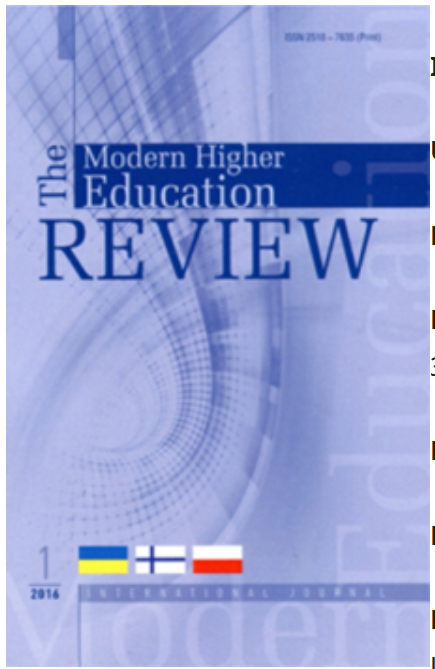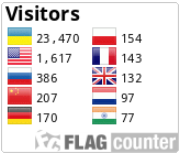DIGITAL TECHNOLOGIES IN CREATING CHOREOGRAPHIC PERFORMANCES
DOI:
https://doi.org/10.28925/2617-5266/2024.911Keywords:
digital technologies, choreographer, choreographic performances, creation of choreographic performancesAbstract
Digital technologies such as computers, websites, 3D modelling and VR reality, multimedia, computer graphics are increasingly used by contemporary choreographers to create performances, choreographic shows and contemporary choreographic works. Nowadays, not every viewer can understand digital media as a new way of perceiving choreographic art. The viewer also underestimates the objects of media art, i.e. the technologies that are used to create a choreographic work. The fact that computer technologies were used in the process of their creation, levels the artistic intention of the choreographer and devalues his creative process. Thus, contemporary dance performances that use sensors to control stage and sound design cannot be understood by everyone and perceived as new media art.
Digital technologies are not perceived as a representation of an audio or multimedia object. Like contemporary dance itself, it is the creation of an imaginary world by the dancer's body. All this is based on certain symbols, because choreographic art is symbolic by nature. As a result, contemporary dance creates a new system of movements and positions of the body in space, which is still developing very rapidly, and which increases the perception of contemporary compositions due to the use of media technologies by contemporary choreographers. The article is addressed to choreographers, choreography teachers, teachers of dance disciplines and directors of dance companies who should be prepared to create highly artistic choreographic performances, dance show projects, performances using modern digital technologies and have a methodology for staging such art products.
Downloads
References
Bakirova, S. A., Izim, T. O., Nikolaeva, L. A., & Saitova, G. Y. (2023). Main features of using digital technologies for choreography education: The case of Kazakhstan. Research in Dance Education, 1–16. https://doi.org/10.1080/14647893.2023.2220651
Bresnahan, A. (2015). The philosophy of dance. The Stanford Encyclopedia of Philosophy. https://plato.stanford.edu/entries/dance/
Druckrey, T., Goodall, J., Jones, A., Kroker, A., Kroker, M., & Massumi, B. (2005). Stelarc. The monograph (Electronic culture: History, theory, and practice).
Katan-Shmid, E. (2008). Playing with virtual realities. Retrieved from https://www.youtube.com/watch?v=2r_LOG7TaQA&t=1693s
Mospan, N. V., & Sysoieva, S. O. (2022). Trends in digital adaptation of schools during the COVID-19 pandemic. Information Technologies and Learning Tools, 91(5), 21–35. https://doi.org/10.33407/itlt.v91i5.5063
Mospan, N. (2023). Trends in emergency higher education digital transformation during the COVID-19 pandemic. Journal of University Teaching & Learning Practice, 20(1), 50-70. https://doi.org/10.53761/1.20.01.04
Pankiv, L. (2023). Features of using modern information technologies in the process of training future teachers of music and choreography. Bulletin of T.G. Shevchenko National University (Chernihiv Collegium), 19(175), 14–19. https://doi.org/10.58407/231903
Pastukhov, O. (2022). Choreographic education online: Pros and cons. Bulletin of the National Academy of Managerial Personnel of Culture and Arts, (4). https://doi.org/10.32461/2226-3209.4.2022.269423
Poklitaryu, R. (2018). “I easily exchanged the path of a dancer for the job of a ballet master.” Newspaper Facts. https://fakty.ua/268483-radu-poklitaru-ya-s-legkostyu-promenyal-put-tancovcshika-na-rabotu-baletmejstera
You, Y. (2022). Online technologies in dance education (Experience from China and the world). Research in Dance Education, 23(4), 396–412. https://doi.org/10.1080/14647893.2020.1832979
Volchukova, V. M., & Zhang, T. (2024). Features of the use of digital technologies by ballet masters R. Nymik and M. Kenningham in the process of creating and staging choreographic works. In Materials of the VI International Scientific and Practical Conference "Science and Society: Modern Trends in a Changing World" (13-15 May 2024, Vienna, Austria) (pp. 334-340). https://sci-conf.com.ua/wp-content/uploads/2024/05/SCIENCE-AND-SOCIETY.-MODERN-TRENDS-IN-A-CHANGING-WORLD-13-15.05.2024.pdf
Zharinova, E. (2016). Inside the chain: An intersection of dance, mathematics, and technology.https://www.academia.edu/41398167/INSIDE_THE_CHAIN_An_Intersection_of_Dance_Mathematics_and_Technology
Published
How to Cite
Issue
Section
License
Copyright (c) 2024 The Modern Higher Education Review

This work is licensed under a Creative Commons Attribution-NonCommercial 4.0 International License.













